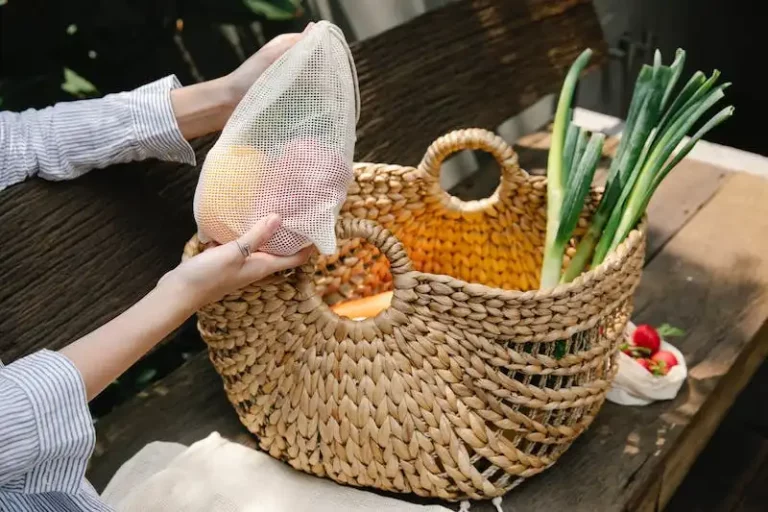Tarragon is a wonderful herb that adds a unique flavor to dishes. There are several varieties of tarragon, but the French variety is considered to be the best. Whether you’re braised beans, sautéed tuna, or a medley of greens and artichokes, tarragon does wonders to enhance the taste.
Not only does tarragon taste great, but it also has many uses in cooking. You can use it in sauces, salads, and even sheet-pan dishes. It pairs perfectly with chicken and can add a burst of flavor to salads.
If you can’t find fresh tarragon, dried tarragon is also available and can be used as a substitute. It may not have the same finesse as fresh tarragon, but it still adds a golden touch to your recipes.
Tarragon has a delicate and slightly licorice-like flavor that works well with a variety of ingredients. It pairs especially well with lemon, so you’ll often find these two flavors together in sauces and dressings.
Whether you’re new to tarragon or a seasoned pro, there are endless recipes and dishes you can create using this versatile herb. So, next time you find yourself wondering what herb to use, give tarragon a try and see how it can elevate your dishes!
Fresh French Tarragon
Tarragon is an herb that has a distinct flavor, often described as being similar to licorice or anise. It is commonly used in French cuisine, where it is highly valued for its unique taste.
When using fresh tarragon, it is important to know that the flavor is most potent when the herb is used before it flowers. The leaves can be used in a variety of dishes, from chicken and fish to sauces and salads. They can also be added to vegetable dishes, such as roasted potatoes, asparagus, or squash. If you’re feeling adventurous, you can even use tarragon to create herb-infused drinks or desserts.
One of the best ways to enjoy fresh French tarragon is to make a flavorful sauce like béarnaise. Simply chop up a bunch of tarragon and mix it with butter, lemon juice, and other herbs. This sauce is perfect for drizzling over steaks, grilled chicken, or even roasted vegetables. Another delicious way to use fresh tarragon is to add it to a salad with mixed greens, radishes, and mushrooms.
If you’re using dried tarragon, keep in mind that the flavor may not be as pronounced as the fresh herb. Dried tarragon works well in dishes that require longer cooking times, such as soups, stews, or lasagna. However, for dishes that need a strong anise-y flavor, it’s best to use fresh tarragon.
To store fresh tarragon, you can place the stems in a glass of water and cover the leaves with a plastic bag. Alternatively, you can wrap the bunch in a damp paper towel and store it in the refrigerator. Either way, it is important to use the herb relatively quickly, as it tends to lose its flavor and potency over time.
So, next time you’re in need of a wonderful herb to enhance the flavors of your dishes, consider adding fresh French tarragon. Its unique and herbaceous taste could be just what you need to create the perfect meal.
What Is Tarragon
Tarragon is a popular herb that is commonly used in cooking. It has a unique taste that can best be described as anise-y or licorice-tasting. Although it is commonly associated with French cuisine, tarragon is actually native to Siberia and Western Asia.
One of the most common uses for tarragon is in chicken dishes. Whether you’re making a simple roasted chicken or a more complex chicken and vegetable medley, tarragon adds a wonderful flavor to the dish. It also pairs well with fish, such as tilapia or tuna, and can be used to create a delicious bearnaise sauce.
Tarragon is also a great herb to add to salads. Its unique flavor adds a refreshing twist to a traditional salad, and it pairs particularly well with greens, potatoes, and radishes. You can also use tarragon in marinades or dressings to add a burst of flavor to grilled vegetables or meats.
Storage and Cooking Tips
To store tarragon, simply place the fresh stems in a glass of water and cover them loosely with a plastic bag. This will keep the herb fresh in the refrigerator for up to a week. Alternatively, you can also dry tarragon by hanging it upside down in a cool, dark place until it becomes brittle.
When cooking with tarragon, it is best to add it towards the end of the cooking process, as excessive heat can cause it to lose its flavor. Tarragon works well in both hot and cold dishes, so feel free to get creative with how you use it in your recipes.
Where to Find Tarragon
Tarragon is readily available in most supermarkets, usually in the fresh herb section. You can also find dried tarragon in the spice aisle. If you’re lucky enough to have access to fresh tarragon, be sure to take advantage of its wonderful flavor and incorporate it into your dishes.
Varieties
There are several different varieties of tarragon, each with its own unique flavor profile. The most common variety is French tarragon, which is often used in cooking and can be found in most supermarkets. It has a delicate flavor that is often described as slightly sweet and licorice-tasting.
Another popular variety is Russian tarragon, which has a milder flavor compared to its French counterpart. It is not as commonly found in supermarkets, but you can easily grow it in your own herb garden. Russian tarragon is often used in desserts and pairs well with sweet flavors like peaches and beets.
If you’re unable to find fresh tarragon, you can also use dried tarragon as a substitution. Just keep in mind that the dried herb has a more concentrated flavor, so you’ll need to use less of it in your recipes.
Regardless of the variety you choose, tarragon can be used in a wide range of dishes. It adds a unique and subtle flavor to main dishes like chicken, fish, and sausages. You can also use tarragon to create delicious sauces like Béarnaise or to add a touch of freshness to roasted vegetables or salads.
When it comes to storing tarragon, it’s best to keep it in the refrigerator. You can store the fresh herb in a plastic bag or container for up to a week. If you have leftover tarragon, you can also freeze it by chopping it up and placing it in an ice cube tray with a little water. This way, you’ll always have tarragon on hand for whatever dish you’re cooking.
Substitutions and Uses
If you’re unable to find tarragon or prefer a different flavor, there are several herbs that you can use as substitutes. Some common substitutes for tarragon include chervil, fennel fronds, and dill. While these herbs may not have the exact same flavors as tarragon, they can still add a similar anise-y or licorice flavor to your dishes.
There are endless ways to incorporate tarragon into your cooking. It works well in both hot and cold dishes, and its versatility makes it a great herb to experiment with in the kitchen. Whether you’re using it to make a classic French sauce or adding it to a sheet-pan dinner with tuna and roasted potatoes, tarragon is sure to elevate the taste of your meals.
Recipes
If you’re in need of some inspiration, here are a few recipes that use tarragon:
- Tarragon Chicken Salad
- Tarragon Roasted Asparagus
- Tarragon Potato Salad
- Tarragon Beet and Radish Salad
- Tarragon Peach Salsa
- Tarragon and Lemon-Glazed Tilapia
- Sheet-Pan Tarragon Chicken with Green Beans
- Tarragon and Sausage Lasagna
- Tarragon Tuna Salad
These recipes are just a starting point, and you can get creative and use tarragon in whatever dishes you like. Whether you’re a fan of its anise-y taste or want to explore new flavor combinations, tarragon is a versatile herb that can enhance the flavors of a wide variety of dishes.
Fresh vs Dried
Tarragon is an herb that is used in a variety of dishes, and whether you choose to use fresh or dried tarragon can have an impact on the flavor of your meal.
Using fresh tarragon gives you a bright and intense flavor that works well in salads, soups, and sauces. The licorice-tasting anise-y flavor of fresh tarragon can enhance the taste of chicken dishes, potato recipes, and even seafood like tilapia or tuna.
On the other hand, dried tarragon has a more subtle and mellow flavor compared to its fresh counterpart. It is a convenient option to have in your pantry as it can be used in a variety of dishes. Dried tarragon is commonly used in spice blends and can add depth to stews, braised meat dishes, and even marinades.
When replacing fresh tarragon with dried tarragon, keep in mind that the dried herb is more concentrated, so you’ll need to use less. As a general rule of thumb, you can substitute one teaspoon of dried tarragon for one tablespoon of fresh tarragon. However, it’s always best to taste as you go to ensure you get the desired flavor.
If you’re using dried tarragon, it’s a good idea to add it to your dish early in the cooking process, as it needs time to rehydrate and release its flavors. On the other hand, fresh tarragon can be added towards the end of the cooking process to preserve its delicate flavors.
Overall, the choice between fresh and dried tarragon depends on your personal preference and the dish you’re making. If you have access to fresh tarragon, it’s highly recommended to use it, as it adds a vibrant and aromatic flavor. However, dried tarragon is a convenient option that can be easily stored in your pantry for whenever you need a hint of that licorice-like taste.
What Does It Taste Like
- Tarragon has a unique flavor that is often described as a cross between licorice and anise.
- Its bold and herbaceous taste adds depth and complexity to a wide range of dishes.
- When used in cooking, tarragon can bring a bright and slightly sweet flavor to both savory and sweet recipes.
- In French cuisine, tarragon is a key ingredient in the classic béarnaise sauce.
- Sautéed with chicken or mushrooms, it creates a wonderful medley of flavors.
- It pairs well with fish, especially tuna and tilapia, adding a refreshing and lemony note to these dishes.
- Tarragon is perfect for marinated vegetables, such as artichokes and beet, as it adds a tangy and herbaceous taste.
- It can be used to flavor soups and potato dishes, giving them a unique twist.
- If you don’t have fresh tarragon on hand, dried tarragon can be used as a substitute, but the flavor won’t be as vibrant.
- Overall, tarragon is a versatile herb that can enhance the flavor of a wide variety of dishes and is a must-have in any herb garden or refrigerator.
So, whether you’re using it in a main dish, as a sauce, or simply as a garnish, tarragon is sure to elevate the taste of your culinary creations. Give it a try and see for yourself!




